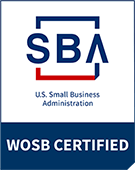Resistant to bacteria, dirt, debris & build up.











TPO ( Thermoplastic Polyolefin) is a blend of polypropylene & ethylene propylene polymers and usually are reinforced with polyester. TPO membranes can be less expensive than other roof replacement options and are seen as a lower cost solution when it’s time to replace a commercial roofing system.
They are typically flat roofs which have a slope of 10º or less. TPO-based products have been available since the 1980s; the first sheets for membrane roofing were introduced in 1989.